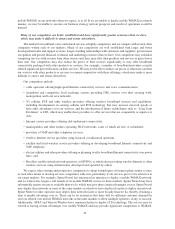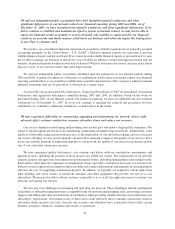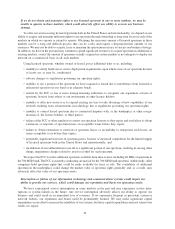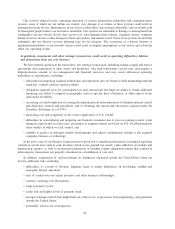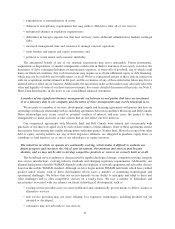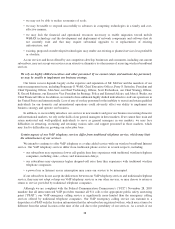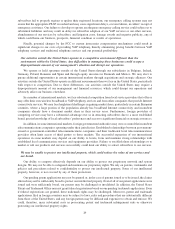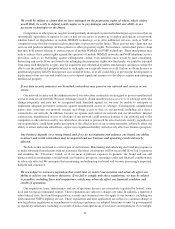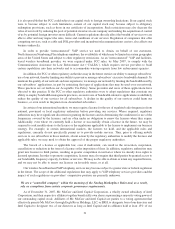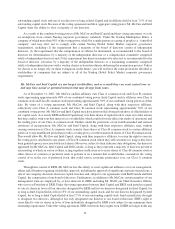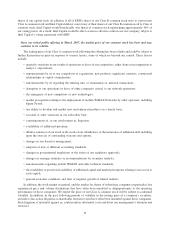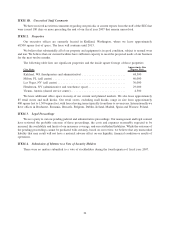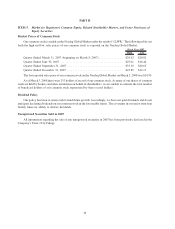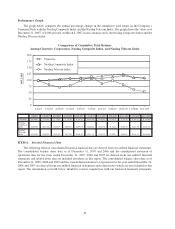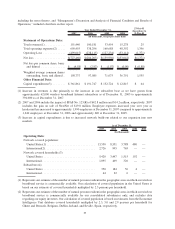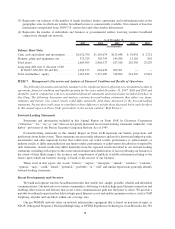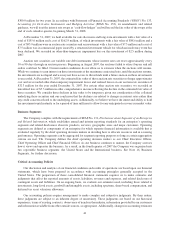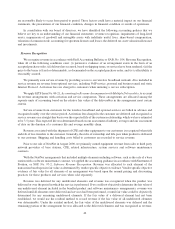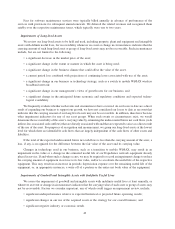Clearwire 2007 Annual Report Download - page 41
Download and view the complete annual report
Please find page 41 of the 2007 Clearwire annual report below. You can navigate through the pages in the report by either clicking on the pages listed below, or by using the keyword search tool below to find specific information within the annual report.shares of our capital stock. In addition, if all of ERH’s shares of our Class B common stock were to convert into
Class A common stock and Intel Capital did not convert any of their shares of our Class B common stock to Class A
common stock, Intel Capital would beneficially own shares of common stock representing approximately 50% of
our voting power. As a result, Intel Capital would be able to exercise effective control over our company, subject to
Intel Capital’s voting agreement with ERH.
Since our initial public offering in March 2007, the market price of our common stock has been and may
continue to be volatile.
The trading price of our Class A common stock following the offering has been volatile and could be subject to
further fluctuations in price in response to various factors, some of which are beyond our control. These factors
include:
• quarterly variations in our results of operations or those of our competitors, either alone or in comparison to
analyst’s expectations;
• announcements by us or our competitors of acquisitions, new products, significant contracts, commercial
relationships or capital commitments;
• announcements by us regarding the entering into, or termination of, material transactions;
• disruption to our operations or those of other companies critical to our network operations;
• the emergence of new competitors or new technologies;
• market perceptions relating to the deployment of mobile WiMAX Networks by other operators, including
Sprint Nextel;
• our ability to develop and market new and enhanced products on a timely basis;
• seasonal or other variations in our subscriber base;
• commencement of, or our involvement in, litigation;
• availability of additional spectrum;
• dilutive issuances of our stock or the stock of our subsidiaries, or the incurrence of additional debt including
upon the exercise of outstanding warrants and options;
• changes in our board or management;
• adoption of new or different accounting standards;
• changes in governmental regulations or the status of our regulatory approvals;
• changes in earnings estimates or recommendations by securities analysts;
• announcements regarding mobile WiMAX and other technical standards;
• the availability or perceived availability of additional capital and market perceptions relating to our access to
such capital;
• general economic conditions and slow or negative growth of related markets.
In addition, the stock market in general, and the market for shares of technology companies in particular, has
experienced price and volume fluctuations that have often been unrelated or disproportionate to the operating
performance of those companies. We expect the price of our Class A common stock will be subject to continued
volatility. In addition, in the past, following periods of volatility in the trading price of a company’s securities,
securities class action litigation or shareholder derivative suits have often been instituted against those companies.
Such litigation, if instituted against us, could result in substantial costs and divert our management’s attention and
resources.
33


